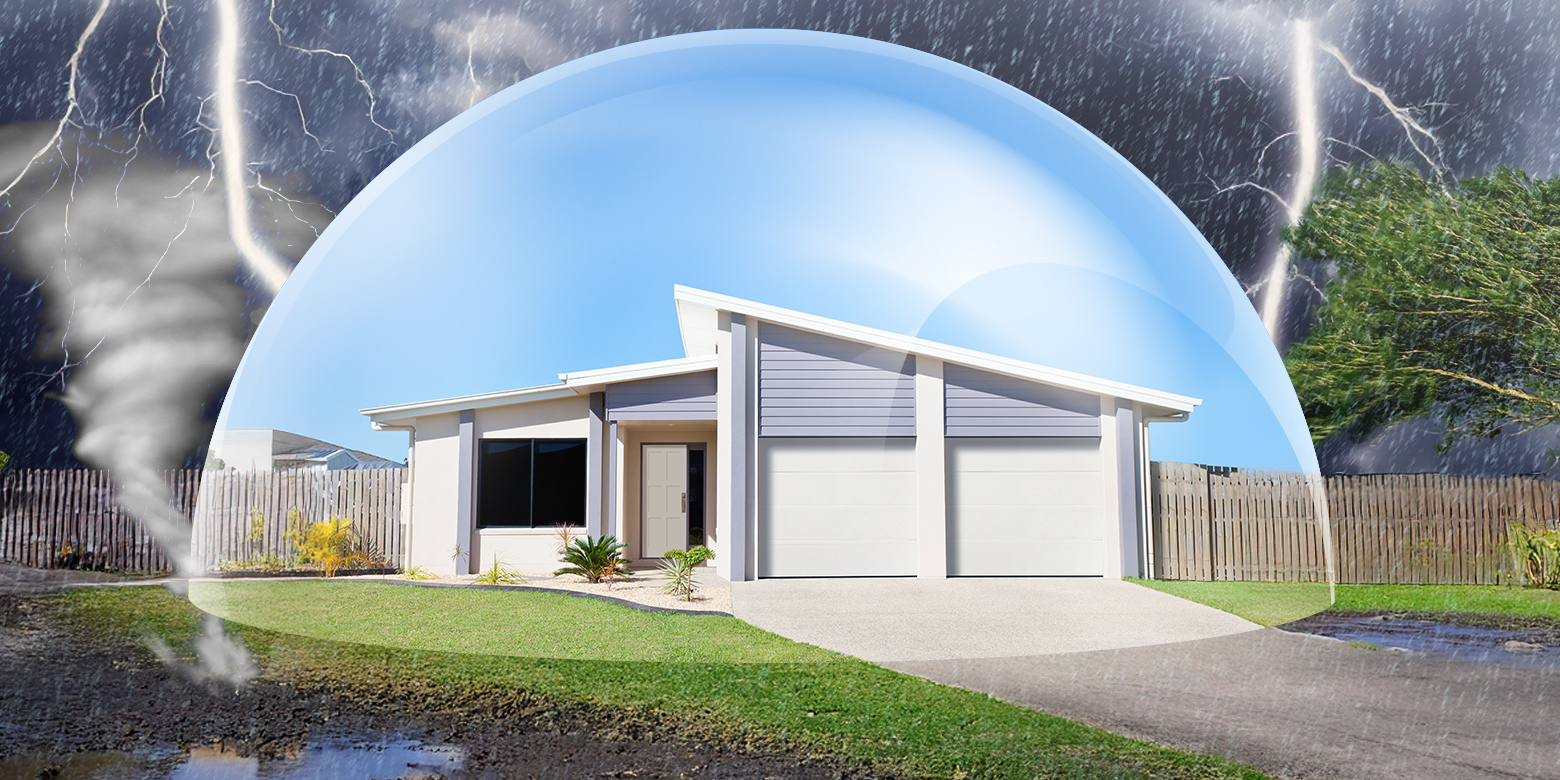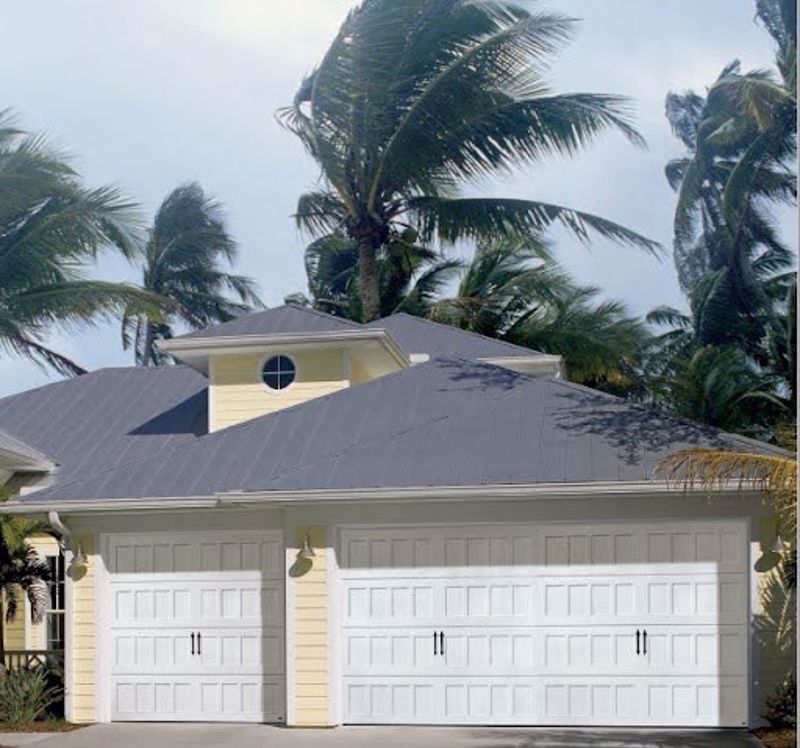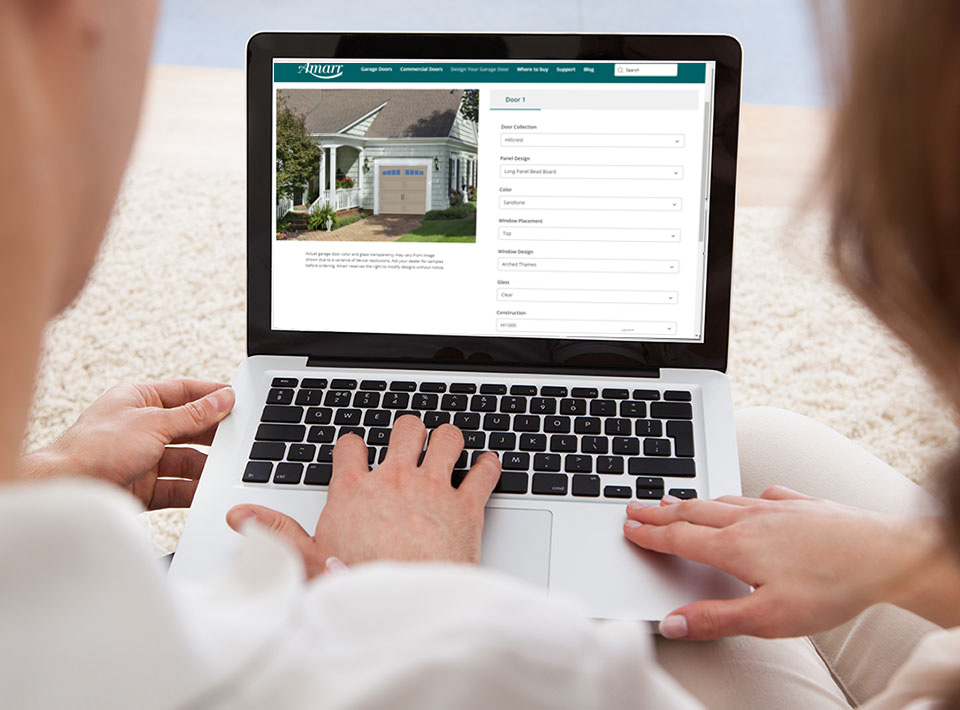How To Hurricane Proof Your Home: Tips & Solutions
- Jun 23, 2025
- Seasonal Tips
- 11 minute read

Hurricanes are powerful and unpredictable, leaving behind devastating damage year after year. While no home can ever be completely “hurricane-proof,” there are smart steps you can take to strengthen your property and improve its chances of weathering the storm. From reinforcing your garage door and windows to securing your roof and outdoor structures, a little preparation can go a long way toward protecting both your home and the people inside it.
Why Hurricane-Proofing Matters
When powerful storms roll in, your home’s first line of defense can make all the difference. From shattered windows to blown-in garage doors, the damage from a hurricane can be devastating—but with the right precautions, you can significantly reduce the risk. So where do you start?
Here are some key areas to consider regarding hurricanes and your home:
- Hurricane frequency: You have to weigh the threat of a hurricane based on where you live—but don’t assume it’s only a concern for Florida or the Gulf Coast. Hurricanes have been known to travel far inland, bringing destructive winds, heavy rain, and flying debris with them. Even if you’re not on the immediate coastline, your home could still be at risk. Understanding your region’s vulnerability and taking steps to prepare can make all the difference when the next storm season hits.
- High-speed winds: Hurricanes are known for their fierce wind speeds, so when you're building or planning improvements to your garage, garage door, or other parts of your home, it's important to choose materials and designs that can stand up to that kind of force.
- Flooding risks: When preparing for a hurricane, it’s easy to focus on wind damage—but the threat of flooding can be just as serious, if not more so. In fact, flooding and water damage frequently account for the highest repair costs after a storm. To help protect your home, start with the basics—properly seal any cracks or gaps around windows and doors to keep water from seeping in. Make sure your eavestroughs and downspouts are clear and functioning well, so rainwater is directed away from your foundation. Taking these small but essential steps can go a long way in reducing flood-related damage.
- Flying objects: A 150-mile-per-hour wind is terrifying enough — now imagine a garden gnome flying at you at that speed. Flying debris is one of the most dangerous threats during a hurricane, which is why protecting your windows is so important. If you live in a hurricane zone, installing storm shutters is a smart long-term solution. Otherwise, be prepared to board up your windows when a hurricane warning is issued to help shield your home from damage.
- Safety concerns: Wanting to stay and protect your home is natural—but your safety, and your family’s, should always come first. If an evacuation advisory is issued in your area, take it seriously and leave well before the storm arrives. Homes can be repaired, but your life is irreplaceable.
- Local building compliance: It’s important to respect bylaws and zoning regulations where you live—especially when it comes to hurricane-proofing your home. Local building codes are designed with your region’s specific weather risks in mind and often include critical requirements for wind resistance, flood protection, and structural reinforcements. The FEMA Building Code Toolkit is a great resource for understanding how building codes help protect your home and community during natural disasters.
- Long-term home value: Investing in hurricane-proofing can boost your home’s value. Reinforced windows, storm shutters, and a solid, impact-resistant garage door not only protect your property but also make it more appealing to buyers. These upgrades can reduce insurance premiums and minimize repair costs after storms, making your home a more valuable asset in the long run.
Essential Steps to Hurricane-Proof Your Home
Here’s what you can do to put your property in the best position to withstand a hurricane:
Reinforce Your Roof
Your roof is a vulnerable area in a storm surge with shingles often getting blown off in a hurricane. It’s wise to inspect your roof every year before the hurricane season begins. Replace or nail down any loose shingles as part of routine home maintenance. You can also hire professional roofers for this task. For areas more prone to strong hurricanes, you can also add straps to help keep the roof safe.
Secure Windows and Doors
If you already have hurricane shutters, be sure to close them well before the storm hits. If not, consider installing them—they offer strong, reliable protection against flying debris. At the very least, keep sturdy plywood on hand so you can board up your windows and doors when a hurricane warning is issued. Taking these steps can make a big difference in protecting your home.
Secure Outdoor Areas
If a hurricane is on the way, secure or bring inside anything that isn’t anchored down. Patio furniture, children’s toys, garden tools, and other loose items can turn into dangerous projectiles in high winds. Clearing your yard helps protect both your home and your neighbors.
Protect Against Flooding
Sealing up cracks and windows not only helps prevent flooding, it also keeps unwanted bugs outside your house. Before the storm comes, ensure your downspout directs water away from your house and down a slope.
Install a Backup Power Source
It’s wise to keep a generator on your property. Hurricanes can knock electrical grids down for days, so having a basic gasoline generator can allow you to get back to normality quicker.
Check Your Insurance Coverage
Home insurance is more expensive if you live in a common hurricane region. It’s unfortunate, but it makes sense: Insurance companies know they may have to pay out large sums to repair homes. If you’re considering moving somewhere hurricanes are common, factor larger home and flood insurance payments into your budget. It may annoy you every month when you see your bill, but you’d be glad you have comprehensive coverage if a disastrous hurricane strikes.
Prepare an Emergency Kit
Having a first aid kit at home is always a good idea—but when preparing for a hurricane, you’ll want to go a step further. Put together an emergency supply kit that includes flashlights, batteries, blankets, shelf-stable food, water, candles or lanterns, medications, and important documents in a waterproof container. Think about what you might need if the power goes out or roads become inaccessible for several days. Planning ahead can help you stay safe and comfortable until conditions improve.
Upgrade Your Garage Door
One of the most vulnerable entry points during a hurricane is your garage door. While regular maintenance can help reinforce it, sometimes an upgrade is the best option. A door made of outdated materials or lacking modern reinforcements may not hold up against high winds. Investing in a strong, impact-rated garage door can better protect your home—and as a bonus, enhance curb appeal and add long-term value. Also garage doors with insulation are often more durable than ones without. Insulation helps with hurricane-proofing, as it adds weight and stability to a garage door. Insulation is also good at keeping external weather outside of your garage and your home.
Hurricane Preparation Tips by State and Coastline
Hurricanes affect many regions throughout the U.S., and while the overall threats—like high winds, heavy rain, and flooding—are often the same, the way each region experiences a storm can vary. These differences can influence how you prepare, from structural reinforcements to evacuation planning.
How To Hurricane-Proof Your Home in Florida
Florida has an active storm season that typically features at least one hurricane or tropical storm every year. Because Florida is a peninsula, the strong wind a hurricane accumulates over water doesn’t have much time to dissipate over land. This was the case for both Hurricane Andrew and Hurricane Ian.
In hurricane-prone states like Florida, certain precautions are especially important. It’s wise for Floridian homeowners to keep a set of hurricane straps on hand. These straps, also called hurricane clips or ties, are important tools for hurricane proofing. In hurricane-force winds, a roof can actually fly right off. The straps can prevent that. Floridians must also be vigilant about bringing in outdoor furniture. Hurricanes that hit Florida often also affect Georgia, South Carolina and North Carolina.
How To Hurricane-Proof Your Home in the General Coastal Area
The Gulf Coast has seen its fair share of Category 5 hurricanes over the years, including Hurricane Beryl and Hurricane Katrina. Because of the prevalence of swamp land, marshes and river systems in Alabama, Mississippi and Louisiana, flooding is a major concern in these areas. This makes sealing cracks and caulking gaps especially important here. You may even want to keep some sandbags on hand in case of a flooding emergency.
How To Hurricane-Proof Your Home in Texas
Homeowners along the Texas Gulf Coast should follow standard hurricane prep—like making a home inventory, securing outdoor items, and staying in touch with their insurance agent. But Texas comes with added challenges: widespread power outages, flash flooding, and long evacuation routes due to its size.
If you live in a flood-prone area like Houston or Galveston, consider elevating electrical systems and installing a sump pump with battery backup. Rural residents should keep extra fuel, water, and supplies on hand, as storm recovery may take longer. And with hurricane paths in Texas often shifting quickly, stay alert and have a flexible evacuation plan ready.
Why Your Garage Door Matters in a Hurricane
Even with all the right prep, your home could still be at risk if your garage door isn’t built to withstand high winds. Since garage doors cover a large surface area, they’re especially vulnerable to pressure changes and flying debris. That’s why choosing a reinforced, hurricane-rated garage door is a critical step in storm-proofing your home regardless of where you live.

A garage door without windows is less vulnerable to flying debris in high winds.
FAQs About Hurricane-Proofing
Here are some frequently asked questions about preparing a home to withstand a hurricane:
How Do I Stay Safe During a Hurricane?
Here are some basic best practices for hurricane preparedness:
- Bar the door: Secure the door and reinforce it with sturdy plywood for added protection.
- Stay indoors: Remain indoors until local authorities confirm it’s safe to go outside.
- Beware of downed electrical lines: Downed electrical lines pose one of the most serious risks during and after a hurricane. Always keep a safe distance and notify the authorities as soon as possible.
What Kind of House Can Withstand a Category 5 Hurricane?
Some companies specialize in building homes designed to withstand a Category 5 hurricane. While there are no guarantees, if you're building a new home or garage, it's worth considering what these experts can offer. Investing in a high-quality garage door can significantly reinforce a vulnerable point of your home, providing added protection during severe storms.
Top Materials for Hurricane-Resistant Homes and Garage Doors
When it comes to hurricane resistance, materials such as high-quality wood, steel, concrete, and polystyrene are known for their durability and strength. These materials help safeguard structures from the intense winds and forces of a hurricane, making them excellent choices for building or reinforcing your home. Similarly, your garage door should be made of strong, durable materials. Be sure to thoroughly research garage door options to ensure you’re selecting the best material for your specific needs.
Are Hurricane-Proof Homes Also Tornado-Proof?
A home that can withstand hurricane-force winds should also hold up against tornado winds. So the answer is “probably”, but not always.
How Much Does It Cost to Hurricane-Proof Your House?
Hurricane windows can cost from $100 to $500 per window, totaling $1,128–$10,298 to replace the windows on your entire home. Installing hurricane windows and reinforcing roofs could well be worth it, though. If all hurricane-zone homes had stronger connections between roofs and walls and together nail spacing, this could save $8.1 billion per year. By paying a little more upfront, you can save money over the lifespan of your home.
Maintain Your Home for Long-Term Hurricane Protection
Hurricanes are scary, but the good news is, you don’t really have to sacrifice anything for a hurricane-proof garage door. At Amarr, many of our designs are available in reinforced models that can withstand powerful hurricanes. So you can still get the look you want for your home without compromising safety.

